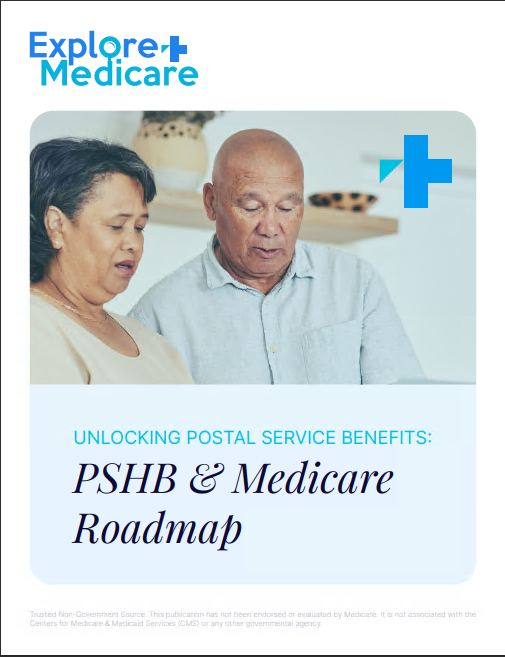Key Takeaways
-
Missing your Medicare enrollment window can result in costly penalties that last your lifetime.
-
Choosing the right Medicare coverage during enrollment can save you thousands in healthcare costs each year.
Avoid Costly Surprises: Medicare Enrollment Timelines Explained
If you’re nearing retirement or turning 65, Medicare enrollment is likely high on your list of concerns. Navigating Medicare enrollment can feel overwhelming, but knowing key dates and requirements upfront can help you avoid penalties and gaps in coverage. Let’s simplify this important milestone.
Your Initial Enrollment Window: When and How to Act
The first opportunity you’ll have to enroll in Medicare happens during the Initial Enrollment Period (IEP). This period begins three months before the month you turn 65 and continues for three months after your birthday month—a total of seven months. Mark these dates clearly because missing your IEP can lead to lifelong penalties.
Here’s how the timing breaks down clearly:
-
Three months before your 65th birthday: Enroll now and your coverage starts the month you turn 65.
-
During your birthday month: Coverage begins the following month.
-
Within three months after your birthday month: Coverage may begin two to three months later.
Acting promptly during the first three months of your IEP is your best strategy to ensure seamless coverage.
What Happens if You Miss Your Initial Enrollment?
If your IEP comes and goes without action, you’re not entirely out of luck, but complications arise:
-
General Enrollment Period (GEP): This period occurs annually from January 1 to March 31. Coverage won’t begin until July 1, leaving you with potentially significant coverage gaps.
-
Penalties: Medicare Part B premiums increase by 10% for each 12-month period you delay enrollment beyond your IEP. These penalties stick with you for life.
When Delaying Medicare Enrollment Makes Sense
Sometimes, waiting to enroll can be beneficial—especially if you’re still working past 65 or covered by your spouse’s active employer health plan. Medicare offers Special Enrollment Periods (SEPs) for qualifying individuals, allowing enrollment without penalties.
-
Employer coverage: If your workplace has more than 20 employees and you have health insurance through employment, you can delay Medicare without penalty.
-
Eight-month SEP: Upon retirement or losing employer coverage, you’ll have an eight-month window to enroll in Medicare Parts A and B without penalties.
The Parts of Medicare and What They Cover
Understanding the different parts of Medicare is essential when deciding how to enroll. Here’s a simplified breakdown:
Medicare Part A (Hospital Coverage)
-
Covers inpatient hospital stays, skilled nursing care, hospice, and limited home healthcare.
-
Most people receive Part A premium-free if they or their spouse have worked and paid Medicare taxes for at least 40 quarters (10 years).
-
Deductibles and copayments apply, including a $1,676 deductible per hospital stay in 2025.
Medicare Part B (Medical Coverage)
-
Covers outpatient care, doctor visits, preventive services, lab tests, and medical equipment.
-
Standard monthly premium for 2025 is $185 with an annual deductible of $257.
-
After the deductible, Medicare typically pays 80%, leaving you responsible for the remaining 20%.
Medicare Part D (Prescription Drug Coverage)
-
Offered through private insurance companies approved by Medicare.
-
Essential for reducing prescription costs, capped at $2,000 out-of-pocket per year starting in 2025.
-
Enroll as soon as eligible to avoid penalties—a 1% premium increase for every month delayed.
Medicare Part C (Medicare Advantage)
-
Private alternative to Original Medicare, often combining Parts A, B, and usually D into one plan.
-
Typically offers extra benefits like vision, dental, and hearing care.
-
Costs vary widely and often include additional premiums and copayments.
Making Sense of Medigap: Is It Right for You?
Original Medicare (Parts A and B) doesn’t cover everything, often leaving gaps in coverage. That’s where Medigap, or Medicare Supplement Insurance, comes in handy.
-
Helps cover deductibles, copayments, and coinsurance expenses from Original Medicare.
-
Best enrolled in during your six-month Medigap Open Enrollment Period, starting the month you turn 65 and enroll in Part B.
-
Waiting can lead to higher premiums or denial based on your health conditions.
Understanding Medicare Advantage vs. Original Medicare
Choosing between Original Medicare and Medicare Advantage significantly affects your healthcare and financial future. Consider:
-
Coverage flexibility: Original Medicare allows you to see any doctor accepting Medicare nationwide. Medicare Advantage often limits you to network providers.
-
Cost structure: Medicare Advantage usually has lower monthly premiums but higher out-of-pocket maximums (up to $9,350 in-network for 2025).
-
Additional benefits: Medicare Advantage often bundles extra services like dental, vision, and hearing coverage.
Evaluate your health needs, travel plans, and financial situation carefully when deciding.
Annual Enrollment: Your Chance to Adjust
Each year, from October 15 to December 7, Medicare’s Annual Enrollment Period (AEP) lets you:
-
Switch between Original Medicare and Medicare Advantage.
-
Change Medicare Advantage plans.
-
Adjust or enroll in a new Part D prescription drug plan.
Coverage changes made during AEP take effect January 1, giving you flexibility to adapt to changing health needs or costs.
Special Enrollment Opportunities
Life changes can trigger Special Enrollment Periods outside standard enrollment windows. Common scenarios include:
-
Moving out of your plan’s service area.
-
Losing other credible prescription coverage.
-
Qualifying for Medicaid.
These events provide short windows—usually two to three months—to adjust your Medicare coverage without penalties.
Staying Informed: Annual Notice of Change (ANOC)
Every September, Medicare Advantage and Part D plan holders receive an Annual Notice of Change (ANOC) outlining changes to premiums, coverage, deductibles, and provider networks. Carefully reviewing your ANOC helps avoid surprises in coverage or costs.
Enrollment Mistakes to Avoid at All Costs
To protect your financial and physical health, beware of these common enrollment pitfalls:
-
Ignoring enrollment periods: Missing your enrollment window can saddle you with permanent penalties.
-
Misjudging future health needs: Selecting inadequate coverage can result in significant unexpected medical bills.
-
Overlooking prescription drug coverage: Delaying Part D enrollment can dramatically increase your drug costs.
Securing Your Health and Peace of Mind
Medicare enrollment is more than just paperwork—it’s your ticket to secure, affordable healthcare throughout retirement. Choosing wisely now means fewer worries later.
If navigating Medicare still feels complicated, professional help is available. For personalized guidance tailored to your healthcare needs, speak directly with a licensed agent listed on this website. Don’t leave your retirement healthcare to chance—take control today.









